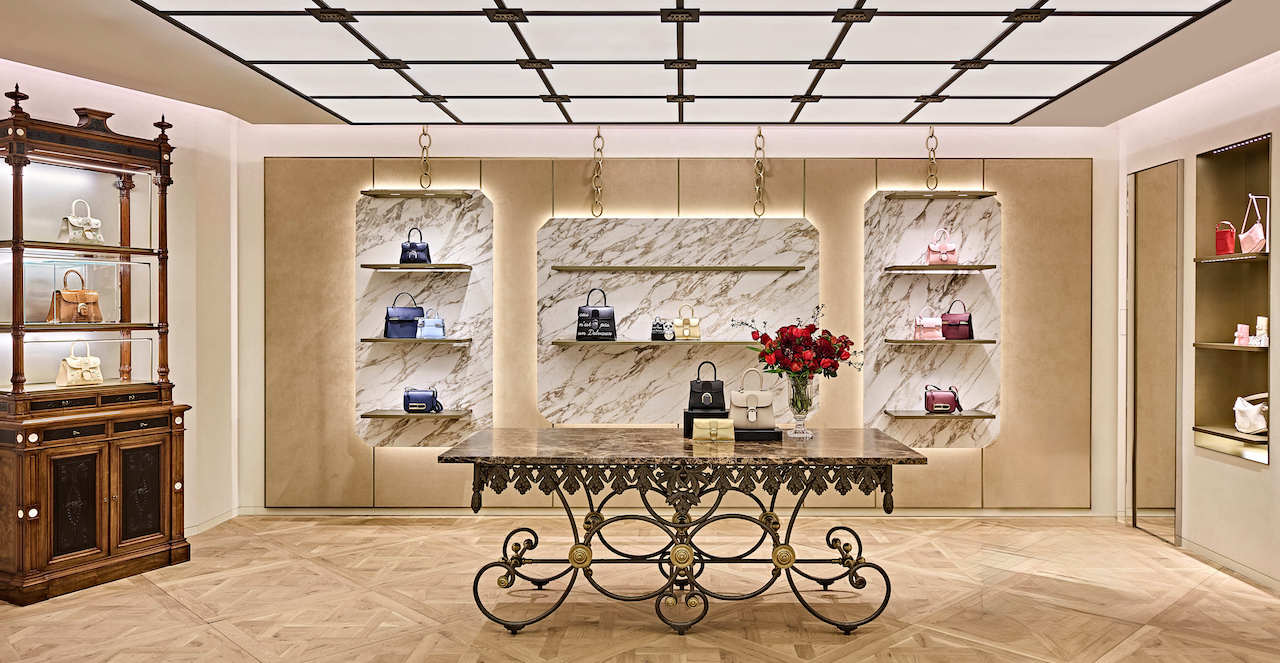From Brussels to Beijing: the Italian architecture studio celebrates the history of the Belgian Maison, the oldest leather goods company in the world, in a project that expresses a sophisticated dialogue with references and symbols from two different cultures.
Heritage, craftsmanship, savoir-faire. Delvaux, the oldest luxury leather goods company in the world, founded in Belgium in 1829, has inaugurated its new flagship store in Beijing, inside the prestigious Wang Fu Central shopping mall. The Milan architecture studio Vudafieri-Saverino Partners, who has been curating the global concept for the Delvaux boutique since 2012, has created an interior design project in line with the Maison’s roots and expressive codes, while also maintaining a unique character that draws on the local cultural heritage and symbols.

Reinterpreting the interiors with a contemporary approach, rich in refined and sophisticated references, the architects Tiziano Vudafieri and Claudio Saverino have combined a Belgian style and character with the beauty of fine details and antique pieces, selected by Jean Marc Loubier, the Delvaux CEO, to create an enveloping and refined atmosphere capable of making customers feel an authentic connection with the brand’s values.

The flagship store covers a surface area of 130 sq.m divided into three different environments: at the entrance, the foyer separates the Delvaux bar, on the left, from the VIC (Very Important Customer) room, a welcoming and fascinating lounge area with walls covered in an imperial red colour in homage to China.

One highly distinctive feature of the foyer space is the ceiling, constructed of metal and lighting panels, for which the architects drew inspiration from the Maison du Peuple, a famous symbol of Belgian culture and masterpiece of Art Nouveau, constructed in Brussels in the late 19th century by Victor Horta. The walls, finished in a warm white stucco and caramel-coloured suede panels, feature specially designed display units in premium Calacatta Oro marble with shelving in glass and bronzed brass.

The attention to detail can also be found along the corridor leading to the VIC room, in which the curved wood panelling on the walls – a distinctive element of the Delvaux concept that finds a new expression in every boutique – is covered in black and white wallpaper depicting the Grand Place in Brussels, with its ornamental and aesthetic richness. Standing out against this background are the colours and shapes of the Delvaux bags and accessories, which surround the space, offering visitors an immersive experience. In the VIC room, the vintage charm of the gold totems/screens on the wall enriches the entire space, which is clad with a soft red Alcantara, and where a shelving system in glass and bronzed brass is designed to display the most sought-after pieces in the collection.

The Delvaux Bar, with its striking ribbed brass counter with a Calacatta Oro top and the mobile bar in flamed wood is designed as a space for customers to chat and interact together. This space also houses one of the most iconic items of furniture developed under the Delvaux concept: the typical Flemish wardrobe with its sinuous lines, reinterpreted in a contemporary key and made of wood, with an irregular frame.

The Versailles-style parquet floor adds a touch of warmth and elegance to the environments, skilfully matched with typical Delvaux concept materials: such as pale gold, bronzed brass, Calacatta Oro marble, velvets and Alcantara, as well as the warm white stucco that embellishes the walls. Furniture made to designs by the architects, such as the elegant velvet chairs in the VIC room, alternate with a selection of antique pieces, such as the marble and brass Table de boucher dating back to 1870, the sculptural table consisting of four modular elements in white marble with a glass top (a limited edition piece designed by François Kovacs), and the two tall antique display cases in wood and ivory, displaying some of the brand’s iconic piece. All these elements as a whole go to make up an eclectic style, generated by the subtle balancing of colours and shapes.

The visionary identity and refined craftsmanship of the Delvaux brand is also evident in the facade, constructed to designs by the architects. The reference is to the images of Art Deco and modernism of northern Europe, such as the iron and glass structures of the Crystal Palace, the geometric shapes of Charles Rennie Mackintosh and the De Stijl movement.
Images: Courtesy Delvaux

